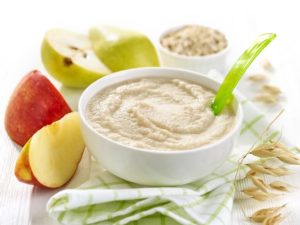Clusterfeeding – this word is stumbled upon by many breastfeeding mothers in the course of the first months of their baby’s life. In the evening hours and when babies are sick, incessant and never-ending breastfeeding occurs.
What is behind this phenomenon? What happens to a baby going through a growth spurt? Is the so-called clustering normal? What do you have to watch out for if a baby is clustering and not gaining weight? If you are breastfeeding your baby, you are doing a lot right.
With some information you can calm down and respond well to the needs of your child. In this article, we would like to give you some useful tips that will help you keep your cool during the stressful “continuous breastfeeding” phase.
Table of contents
Clusterfeeding: The Little Caterpillar That Never Sleeps
Many mothers and fathers are worried and uncertain when their child suddenly wants to nurse more often at the breast. Worries arise, such as: “Is he getting enough to drink?” and “Maybe my milk isn’t enough!”.
It is important that you know that this is normal behavior that the vast majority of babies exhibit. Cluster feeding is something many parents know from their children. It is a phase and will pass. What is important is that you give in to your baby’s desire and give him what he needs.
What Does Clusterfeeding Mean?
“Cluster” is a word from the English language and means “accumulation”, “Feeding” means “to feed”. Cluster feeding means that a baby wants to breastfeed or be fed very often and at short intervals. Colloquially, clustering has also become common.
The Scientific Explanation For Clusterfeeding
The phenomenon of cluster feeding has not been sufficiently studied scientifically. Many midwives know it from practice. Usually, three to four reasons are given for clusterfeeding.
- Your baby’s stomach is still small.
- Your baby stimulates milk production during clusterfeeding.
- Babies are not full for long.
- Your baby is satisfying its need for closeness.
Clusterfeeding: The Smaller The Stomach, The Bigger The Hunger
Babies have tiny stomachs. To become full, they need a small amount of milk at first. Breast milk is digested quickly and soon leaves the stomach for the intestines. The effect is: the baby is quickly hungry again.
It has to breastfeed again. In the first weeks and months of life, babies double their body weight. They set off at a sprint in terms of weight gain. An enormous amount of nutrients is needed to provide the energy for this.
The nutrients are provided in breast milk. When a baby breastfeeds, it gets exactly the amount of nutrients it currently needs. With clusterfeeding, this happens at shorter intervals.
Stimulating Milk Production And Cluster Feeding
Scientists, doctors, and midwives suspect that cluster feeding has another beneficial effect on the baby. The glands in the breasts are stimulated to produce more milk during breastfeeding the more often a baby sucks.
This means that more breast milk is available during a growth spurt in the baby or toddler. The total amount drunk is greater than in phases when there is no growth spurt. More nutrients are made available. This helps the baby to gain weight.
The Baby’s Growth Spurt
Did you know that babies do not grow continuously but in stages? The baby’s growth spurt occurs a total of eight times in the first 14 months of life. During this time, your baby experiences restlessness cries much more than usual, sleeps less soundly, and is much hungrier.
It is needier for nurturing, wants to be carried a lot, and also breastfeeds more. Often an infection and a cold coincide with the growth spurt phase. You will usually notice afterward that a growth spurt has taken place in the baby because your baby shows a new ability.
The baby’s growth spurt occurs at approximately the same developmental period for all babies. Some babies go through the growth spurt a little earlier, others later.
Your Baby Knows When It’s Full!
The hormone cholecystikin (CCK) controls your baby’s hunger. While your baby is clustering and breastfeeding, the hormone curve rises. Your baby is full after about 20 minutes. The feeling of fullness is the effect of the hormone and lasts another 10 to 20 minutes.
Then the game starts all over again and your baby is hungry again. It may take a few cycles until your baby is full and satisfied to fall asleep. After an hour and a half, your baby may wake up again because the breast milk has been completely digested.
Often young babies fall asleep exhausted from drinking at the breast because it is exhausting. You can try gently nudging and tickling your baby behind the ear or on the neck to get them to drink more stringently.
Often this doesn’t help much. If your baby is tired, sooner or later he will fall asleep at your breast. Clustering is the mechanism your baby’s body uses to prepare for sleep and to build up a supply. Although clustering replenishes the supply, most babies can’t sleep through the night.
Babies Who Sleep Through The Night Are Rare
Doctors and midwives know what sleeping through the night means. It means that a baby manages to sleep for about four to six hours at a time and then still asks for milk. Don’t be pressured by moms and grandmas who ask you, “Does your child sleep through the night?”
Babies and toddlers sleeping through the night are not the norm. Exhaustion and lack of sleep are the norms for most parents during the first years of a child’s life. The baby growth spurt is a stressful period for parents.
Clusterfeeding is a big challenge for you as a mother. No one can take it off your hands. If you are exhausted and do not know what to do, it is good to get help. Premilk feeding can relieve you.
Clusterfeeding Means Gathering Closeness
Your baby is breastfeeding and nursing. You don’t know how long you have been breastfeeding? You have forgotten the time around you? You are not only giving your child nourishment and satiety. You give him love and security with breastfeeding.
When you breastfeed, oxytocin, the so-called bonding hormone, is produced and ensures a closer bond between you and your baby. The baby’s body and brain are undergoing a rebuilding process.
This unsettles your child. Now it is even more important that you give your child a lot of closeness. The easiest and most beautiful way for your baby to get close to you is breastfeeding. You can see this in your baby’s face: Is there a more beautiful sight than your baby falling asleep at the breast?
Clusterfeeding – Is The Milk Not Enough?
This thought quickly suggests itself. You watch your baby suckle and drink incessantly, yet wake up and cry? You put it on again and it still doesn’t seem to get full? You may find this hard to believe: in the vast majority of cases, it’s not because you don’t have enough milk.
The mammary glands are not milked storage chambers. Breast milk is produced at the moment of breastfeeding. In this respect, there cannot be too little. If you are unsure whether the baby’s weight gain is sufficient, ask your midwife or pediatrician.
An Old Myth: Breastfeeding Intervals
In the past, many mothers were wrongly told that babies only needed to feed at certain intervals. Just a few decades ago, the old wives’ tale was told that babies should only drink at certain intervals. There was a danger of overfeeding.
This false narrative is still floating around in many people’s heads. Human babies are born “unfinished” compared to many animal species. Their mother’s milk is ideally suited to their needs. There is no danger of overfeeding with breast milk. Frequent breastfeeding is beneficial for weight gain in the baby.
Baby Weight Gain: Breast Milk Versus Powdered Milk
Unlike follow-on milk products, the composition of the miracle drink breast milk adapts to the needs of the little one. In phases of growth spurts, when a baby wants to breastfeed a lot and cluster feeding is the order of the day, the milk is fattier and thicker.
You can see this in the color, which is yellowish to orange during those times. In the heat of summer, a baby needs a greater amount of fluid. That is why the milk is white to watery transparent. If you are breastfeeding and you persevere with cluster feeding, you can still offer pre-milk for your relief.
The advantage is that your partner can feed your baby. You can take a break, go for a walk or sleep for an hour during this time. However, this can be disadvantageous for the baby’s weight gain.
Cluster Feeding And Supplementary Feeding: Yes Or No?
Due to the increased sucking, your body releases the hormone prolactin. It is responsible for milk production, but it does not have an immediate effect. Prolactin has a preparatory effect.
It is not until the next day that more milk is available on the following day due to the more frequent sucking on the previous day. Cluster feeding usually occurs in the early evening hours. Many babies take a long sleep period of four to five hours afterward.
It can be counterproductive if you feed during this evening “continuous breastfeeding” phase. Your baby would stimulate less hormone production and milk production would decrease.
During the baby’s growth spurt, milk production needs to be high. Supplementary feeding has an impact on breastfeeding and in many cases leads insidiously to weaning.
The Pacifier: Blessing And Curse When It Comes To Weight Gain
The temptation is obvious when you are very exhausted from clusterfeeding and your clustering baby: a pacifier. During the baby’s growth spurt, the pacifier is a logical alternative as a soother.
You should consider whether you want to use a pacifier. Do you use it so that your baby does not drink often? Does he have it in between for a short time to calm down before you sit down to breastfeed?
It is important that the pacifier is not used to delay your baby from breastfeeding. This has a negative effect on milk production because if your baby sucks on the pacifier and not on your breast, the hormone prolactin is not released. When there is a growth spurt in the baby, he needs more milk.
Tips For The Clusterfeeding Phase
Make sure your fluid balance is balanced. You will feel that you are much thirstier than usual. Breastfeeding moms should have a glass or bottle of water handy at all breastfeeding locations. Eat enough, balanced food in small amounts throughout the day. When breastfeeding, you will feel that you are developing a large appetite.
This is good and right. Breastfeeding is not a time to start a diet. A balanced diet with lots of whole grains, vegetables, fruits, and legumes will help you get through the breastfeeding marathon. Distraction: no one can spend hours just watching and adoring their sleeping baby.
You’re not a bad mom if you keep your mind distracted. How about reading a magazine or an exciting book/audiobook while you nurse? Don’t let anyone tell you that you are breastfeeding too much.
You are absolutely doing the right thing. If you are unsure if your baby is gaining enough weight, ask your midwife or pediatrician sooner rather than later.












